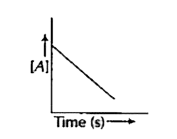Explain the following terms:
Coagulation Solution in Odia
Step by step video & image solution for Explain the following terms: Coagulation by Chemistry experts to help you in doubts & scoring excellent marks in Class 12 exams.
Updated on:21/07/2023Topper's Solved these Questions
- SAMPLE PAPER 5 BOOK - ARIHANT PUBLICATIONCHAPTER - SAMPLE PAPER 5 EXERCISE - GROUP C
7 Videos
- SAMPLE PAPER 5 BOOK - ARIHANT PUBLICATIONCHAPTER - SAMPLE PAPER 5 EXERCISE - GROUP C
7 Videos
- SAMPLE PAPER 4 BOOK - ARIHANT PUBLICATIONCHAPTER - SAMPLE PAPER 4 EXERCISE - GROUP C
7 Videos
- SURFACE CHEMISTRYBOOK - ARIHANT PUBLICATIONCHAPTER - SURFACE CHEMISTRYEXERCISE - CHAPTER PRACTICE ( LONG ANSWER TYPE QUESTIONS)
1 Videos
Similar Questions
The chemistry of corrosion of iron is essentially an electrochemical phenomenon. Explain the reactions occurring during the corrosion of iron in the atmosphere. Suggest two materials other than hydrogen that can be used as fuels in fuel cells.
The molar conductivity of 0.025 mol L−1, methanoic acid is 46.1scm2mol−1. Calculate its degree of dissociation and dissociation constant.
View SolutionThe chemistry of corrosion of iron is essentially an electrochemical phenomenon. Explain the reactions occurring during the corrosion of iron in the atmosphere. Suggest two materials other than hydrogen that can be used as fuels in fuel cells.
The molar conductivity of 0.025 mol L−1, methanoic acid is 46.1scm2mol−1. Calculate its degree of dissociation and dissociation constant.
View SolutionConsider the reaction, Ak−−→P. The change in the concentration of A with time is shown in the following plot:

(a) Derive the expression for the time required for the completion of the reaction.
(b) Predict the order of the reaction.
View SolutionWrite any two methods for preparation of colloid .
View SolutionExplain the following terms :
a.Eletrophoresisb.Coaga––tionc.Dialysisd.Tyndalleffect
View SolutionExplain the Coagulation.
View SolutionWhat is coagulation ?
View SolutionExplain the mechanism of coagulation of blood.
View SolutionExplain the Coagulation
View SolutionExplain the following terms : (i) Electrophoresis (ii) Coagulation (ii) Dialysis (iv) Tyndall effect.
View SolutionExplain the following terms : (i) Electrophoresis (ii) Coagulation (iii) Dialysis (iv) Tyndall effect.
View SolutionExplain the following terms : {:(a. El etropho resis , b. Coagulation),(c. Dialysis,d.Tyndall effect):}
View SolutionExplain the following terms:
(i) Electrophoresis (ii) Coagulation (iii) Dialysis (iv) Tyndall effect.
View SolutionExplain coagulation with suitable examples.
View SolutionExplain the following terms :
(i) Electrophoresis
(ii) Coagulation
(iii) Dialysis
(iv) Tyndall effect.
View SolutionExplain the following terms : Coagulation orfloculation.
View Solution
